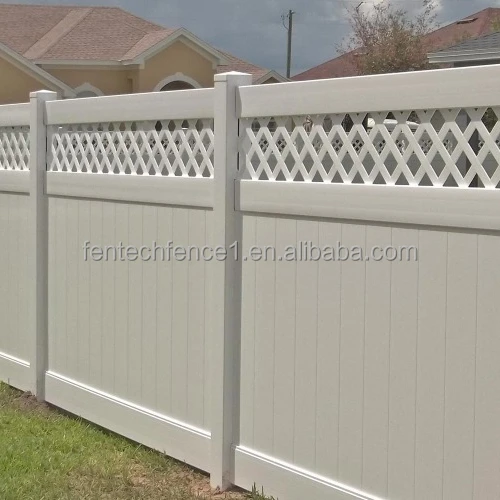

Mozilla/4.0 (compatible MSIE 6.0 Windows NT 5.1 SV1)Īt nPage(C:/home//Could not find the included template.
Lattice top privacy fence how to#
RELATED: Check out this post on how to use a pocket hole jig.

I used a pocket hole jig to drill 1 ½″ pocket holes into the ends of these boards, then installed them using Blue Kote (these are outdoor rated) 2 ½″ pocket hole screws. You can hammer the board into place so it will stay as you are driving the screws. This is helpful if you are working alone and don’t have help holding the pieces as you are driving the screws. HELPFUL TIP: Cut each board SLIGHTLY (1/16″ or so) longer than your measurement for a tight fit. Theoretically, they should be 88″ long, but it’s best to measure and cut to fit here as they likely moved +/- 1″ in the setting process. I measured between each post and cut three 2x4s to fit for each section. However, if your ground is dry, you can pour some water over these holes to wet the concrete mix so it can harden. Our ground was super wet because it had rained several days prior to this, so there was plenty of moisture for the concrete to set up. So I laid my 4×4 posts out on the ground so there was 88″ between each of them. Now, for my fence, I was using 1×6 pickets at the bottom. Step 1: Dig Fence Post Holesįirst, I determined where I wanted my fence and began laying out the pieces. Cedar wood is also an option, but is FAR more expensive than treated. NOTE: Since this is an outdoor fence, it’s best to use treated wood and fasteners that are designed for use in treated wood.

Ours spanned about 32 ft long with 5 posts and four panels, but you could easily modify the size to fit your own space. We kept this privacy fence very simple with a solid bottom half and lattice screened top half.


 0 kommentar(er)
0 kommentar(er)
